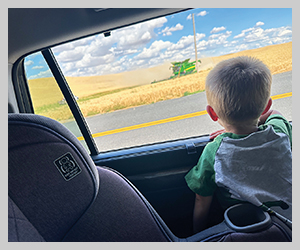
If you’ve followed the controversy over the Columbia-Snake River System, you might have wondered who was representing the people and businesses that are dependent on the waterways for their livelihoods. That would be the Inland Ports and Navigation Group (IPNG).
IPNG is a subgroup of the Pacific Northwest Waterways Association that focuses on the legal aspects of the river system. The group is made up of more than 30 members who pay dues to help cover the cost of attorneys and other advocacy efforts. It is an intervenor defendant in the latest Columbia-Snake River System lawsuit, filed in 2021 after the U.S. Army Corps of Engineers, the Bureau of Reclamation, and Bonneville Power Administration released the Columbia River System Operations environmental impact statement (CRSO EIS).

“An intervenor is somebody who steps into a court case saying, ‘I’m not the original plaintiff or the original defendant, but the outcome has a direct impact on me,’” explained Leslie Druffel, co-chair of IPNG since January 2022. Druffel is also the outreach director for The McGregor Company. “You can insert yourself as an intervenor on either side, and intervenors have the same legal rights as either of the original parties.”
An intervenor can be in the courtroom during legal proceedings and is part of any actions. They can question witnesses, provide their own expert witnesses, and, as in the case with the CRSO EIS lawsuit, can be part of mediation. Both sides of the lawsuit have intervenors. On the plaintiff’s side are the state of Oregon, the Spokane Tribes of Indians, and the Coeur d’Alene Tribe. Intervenors on the defendant’s side include IPNG, the Public Power Council, NW RiverPartners, the states of Montana and Idaho, and several tribes.
The members of IPNG aren’t attorneys themselves; council is provided by Portland Ore., firm, Schwabe. Druffel said a core group of IPNG members meet weekly with the attorneys to talk about where any court cases are at, strategies, and next steps.
“IPNG exists because all these businesses have skin in the game in the sense that if the lower Snake River dams are breached, it has a direct effect on their ability to do business. An example is Almota Elevator. They only ship by barge so, they have a vested interest in stating the case on why navigation needs to remain viable,” she said.
Druffel explained that one of the advantages of belonging to IPNG is economic. Rather than individual organizations or businesses hiring their own lawyers to fight this particular issue, they are sharing the cost with others. In the CRSO EIS litigation, IPNG funded studies on the transportation, economic, and social impacts of removing the dams; those studies were submitted during mediation. IPNG worked with a fisheries scientist to compile current research on delayed mortality; those findings were also submitted during mediation. In addition to those deliverables, IPNG also helps support advocacy efforts within the region and in our nation’s capital.
“We are going out and looking for information that will help tell the whole story,” Druffel said. “The mediation was about finding a basin-wide solution, a Columbia Basin-wide solution. We felt there were some holes in the conversations and the information available, so we took it upon ourselves to find a group who’ll be unbiased and look into the information and provide us with a study.”
Late last year, the Biden administration announced a settlement in the CRSO EIS litigation that calls for up to a 10-year stay in return for salmon restoration project funding and studies on replacing the critical services the dams on the lower Snake River provide. The stay in litigation doesn’t mean IPNG’s work is done. The group still meets regularly to consult with lawyers, and the group is taking part in the transportation and irrigation studies mandated by the agreement. Druffel pointed out that the stay only applies to the EIS; lawsuits can still be filed in other areas, such as the Clean Water Act for water quality (temperature, dissolved gas levels, pH, etc).
The other major action IPNG takes is intervening in lawsuits over dredging, especially in the Lewiston-Clarkston area. The dredging happens every four to seven years and is done to maintain the navigation channel and turning basins.
“Often times, a group will file an injunction (on dredging) and create a court case against the Army Corps of Engineers,” Druffel said. “IPNG attorneys are great at reminding the court that the congressionally authorized navigation channel must be maintained at 14 feet deep by 250 feet wide. It is up to the Corps to determine the best method for removing the accumulated material, the quality of that material, and where it can be best used within the river system for improving habitat.”
Co-chairing IPNG has given Druffel a different perspective of the legal system; she joked that it’s a lot like knowing how the sausage is made. She acknowledged that the process can be frustrating and that it sometimes feels like dam supporters are making little headway.
“You get to a point where you have to step back, lift your head up from the day-to-day minutia in order to see if you are making an impact. And, we are! I take my role as IPNG co-chair very seriously and work hard every single day on this issue,” she said.












